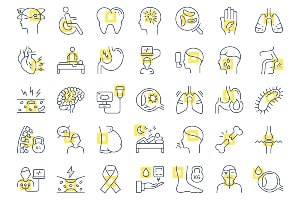About Oral Glucose Tolerance Test (Glucose Tolerance Test)

Learn about the disease, illness and/or condition Oral Glucose Tolerance Test (Glucose Tolerance Test) including: symptoms, causes, treatments, contraindications and conditions at ClusterMed.info.
Oral Glucose Tolerance Test (Glucose Tolerance Test)

| Oral Glucose Tolerance Test (Glucose Tolerance Test) |
|---|
Oral Glucose Tolerance Test (Glucose Tolerance Test) InformationHow are the results of the glucose tolerance test evaluated?Glucose tolerance tests may lead to one of the following diagnoses:
How reliable is the glucose tolerance test?For the glucose tolerance test to give reliable results, the person must be in good health (not have any other illnesses, not even a common cold). Also, the person should be normally active (not lying down, for example, as an inpatient in a hospital) and should not be taking medicines that could affect the blood glucose. In preparation for the oral glucose tolerance test, the person should eat and drink as they normally would. The morning of the test, the person should not smoke or consume caffeine. What about glucose tolerance testing during pregnancy?As mentioned previously, the glucose tolerance test is used for the diagnosis of gestational diabetes (diabetes that develops during pregnancy). It may be used if there are equivocal fasting or random blood glucose results, or to screen for gestational diabetes in pregnant women between 24 to 28 weeks of gestation who are not known to have diabetes. The test may also be used in the postpartum period to detect diabetes in women who had gestational diabetes during pregnancy. Women who had gestational diabetes do not always develop diabetes later in life, but they should undergo diabetes screening at least every three years throughout their life. What does the glucose tolerance test measure?The classic oral glucose tolerance test measures blood glucose levels five times over a period of three hours. Some physicians simply take a baseline blood sample followed by a sample two hours after drinking the glucose solution. In a person without diabetes, the glucose levels rise and then fall quickly. In someone with diabetes, glucose levels rise higher than normal and fail to come back down as fast. People with glucose levels between normal and diabetic levels have so-called impaired glucose tolerance (IGT). People with impaired glucose tolerance do not have diabetes. Each year, 1% to 5% of people whose test results show impaired glucose tolerance actually develop diabetes. Weight loss and exercise may help people with impaired glucose tolerance return their glucose levels to normal. In addition, some physicians advocate the use of medications, such as metformin (Glucophage), to help prevent/delay the onset of overt diabetes. Studies have shown that impaired glucose tolerance itself may be a risk factor for the development of heart disease, and whether impaired glucose tolerance turns out to be an entity that deserves treatment itself is something that physicians are currently debating. What is the glucose tolerance test?Though no longer routinely used for diagnosing diabetes. The oral glucose tolerance test (OGTT) was the gold standard for making the diagnosis of type 2 diabetes. It is still commonly used during pregnancy for diagnosing gestational diabetes. With an oral glucose tolerance test, the person fasts overnight (at least 8 hours, but not more than 16 hours). The next morning, the fasting plasma glucose is tested. After this test, the person receives a dose of oral glucose (the dose depends upon the length of the test). There are several methods employed by obstetricians to do this test, but the one described here is standard. Usually, the glucose is in a sweet-tasting liquid that the person drinks. Blood samples are taken up to four times at different time points after consumption of the sugar to measure the blood glucose. What is the preparation for a glucose tolerance test?As mentioned previously, preparation for the oral glucose tolerance test involves fasting overnight (from 8 to 16 hours) and participating normally in activities of daily living. The individual should eat and drink as they normally do prior to the test. The morning of the test, the person should not consume caffeine or smoke. |
More Diseases
A | B | C | D | E | F | G | H | I | J | K | L | M | N | O | P | Q | R | S | T | U | V | W | X | Y | Z
Diseases & Illnesses Definitions Of The Day
- Noncancerous Colloid Thyroid Nodule (Thyroid Nodules) ‐ How are thyroid nodules diagnosed?, Introduction to thyroid nodules …
- Skin, Laser Resurfacing (Laser Resurfacing) ‐ CO2 Laser Resurfacing, Complications of Laser Skin Resurfacing …
- Malignant Fibrous Histiocytoma (Bone Cancer Overview) ‐ Are there any treatments or medications that relieve bone cancer pain? …
- Double Vision ‐ Is it possible to prevent double vision?, What are the symptoms and signs of double vision? …
- Ageusia (Taste Disorders) ‐ Are taste disorders serious?, Can taste disorders be treated? …
- Autism Screening and Diagnosis ‐
- Alpha-fetoprotein Blood Test ‐ In which situations are high blood (serum) levels of AFP used as a tumor marker? …
- Polymyalgia Rheumatica ‐ How do health care professionals make a diagnosis of polymyalgia rheumatica? …
- Stump Appendicitis (Appendicitis) ‐ Appendicitis definition and facts, Are there long-term consequences of appendectomy? …
- Gonorrhea (Gonorrhea In Women) ‐ Gonorrhea facts, How is gonorrhea diagnosed?, What are sexually transmitted diseases (STDs)? …